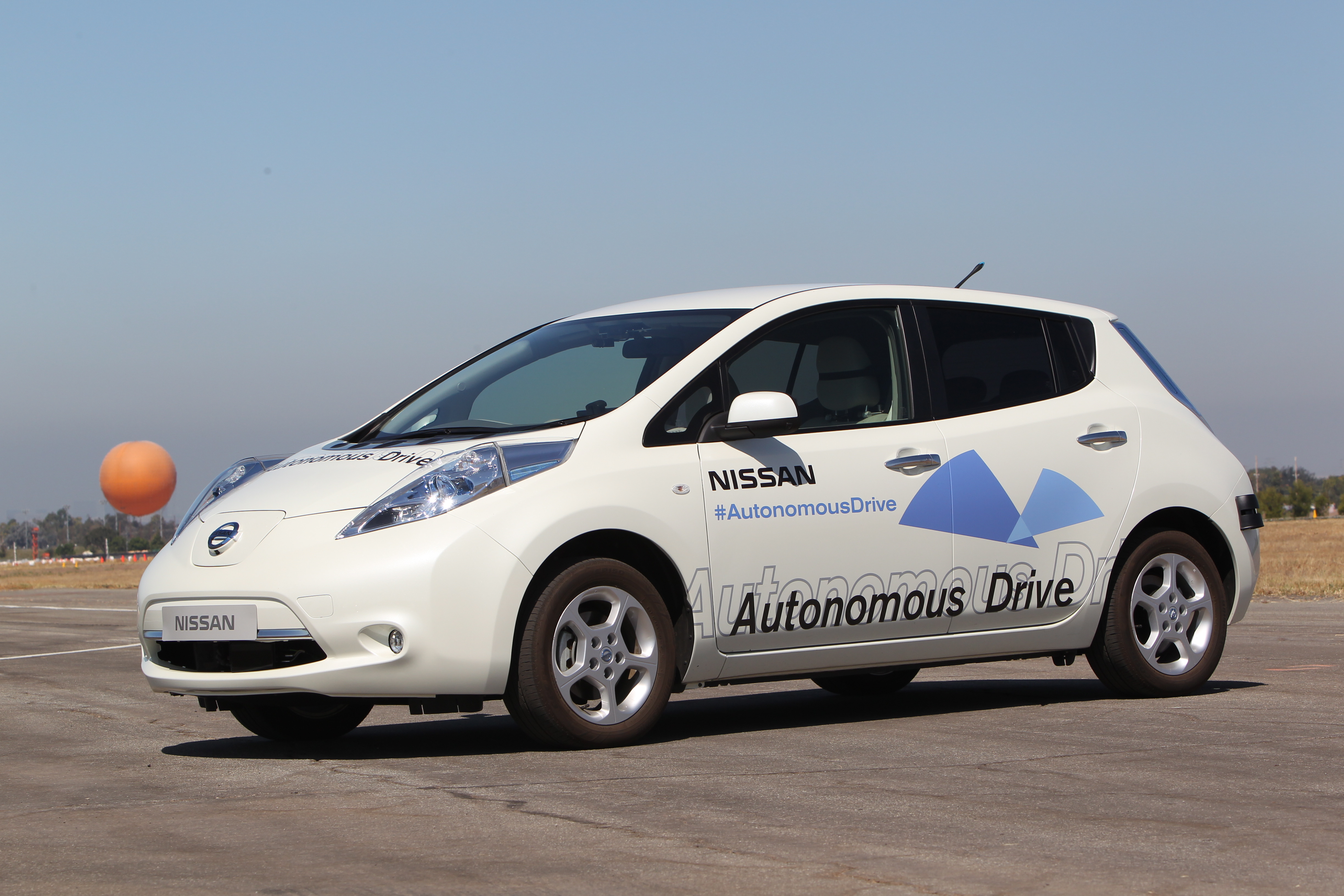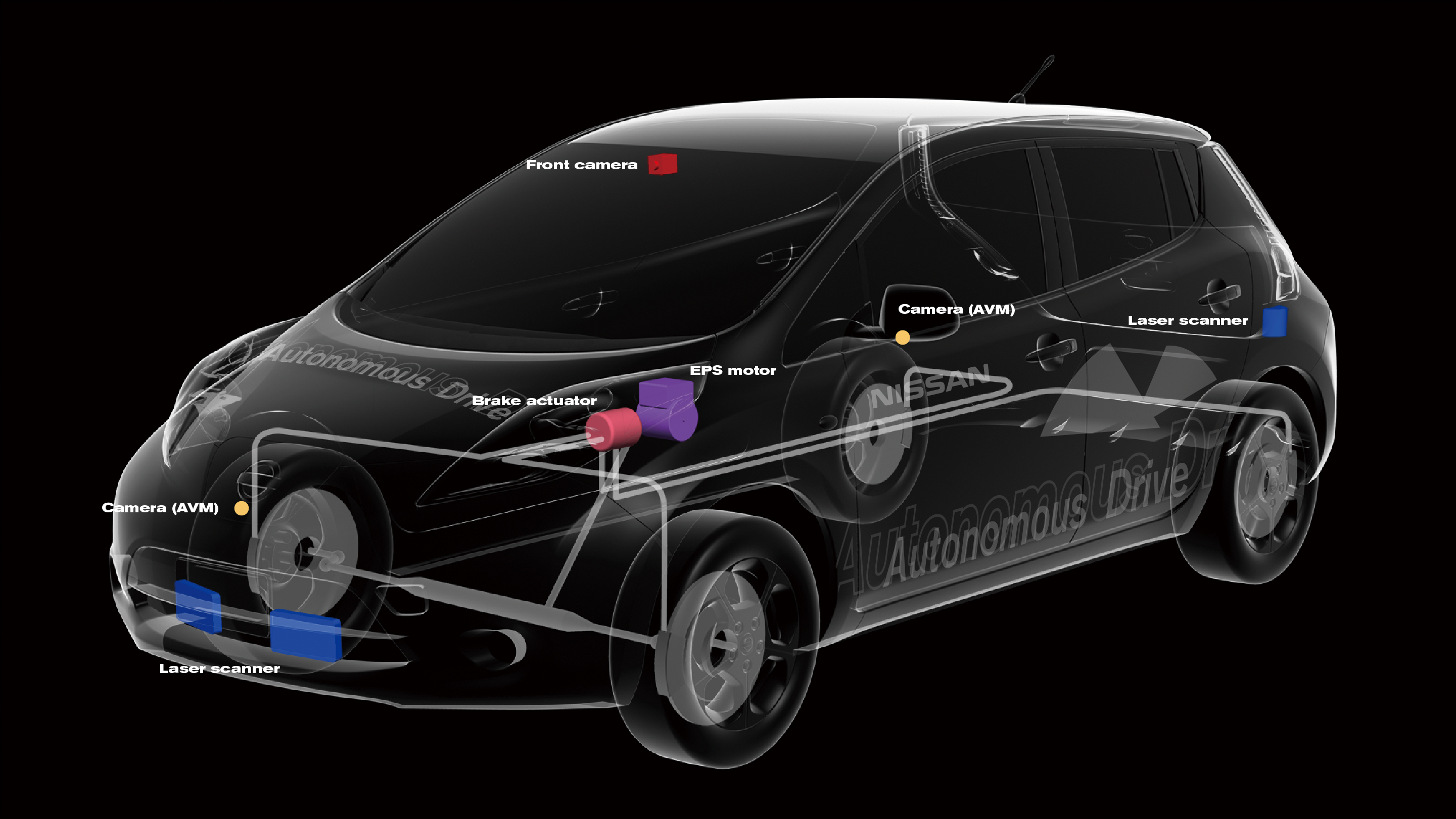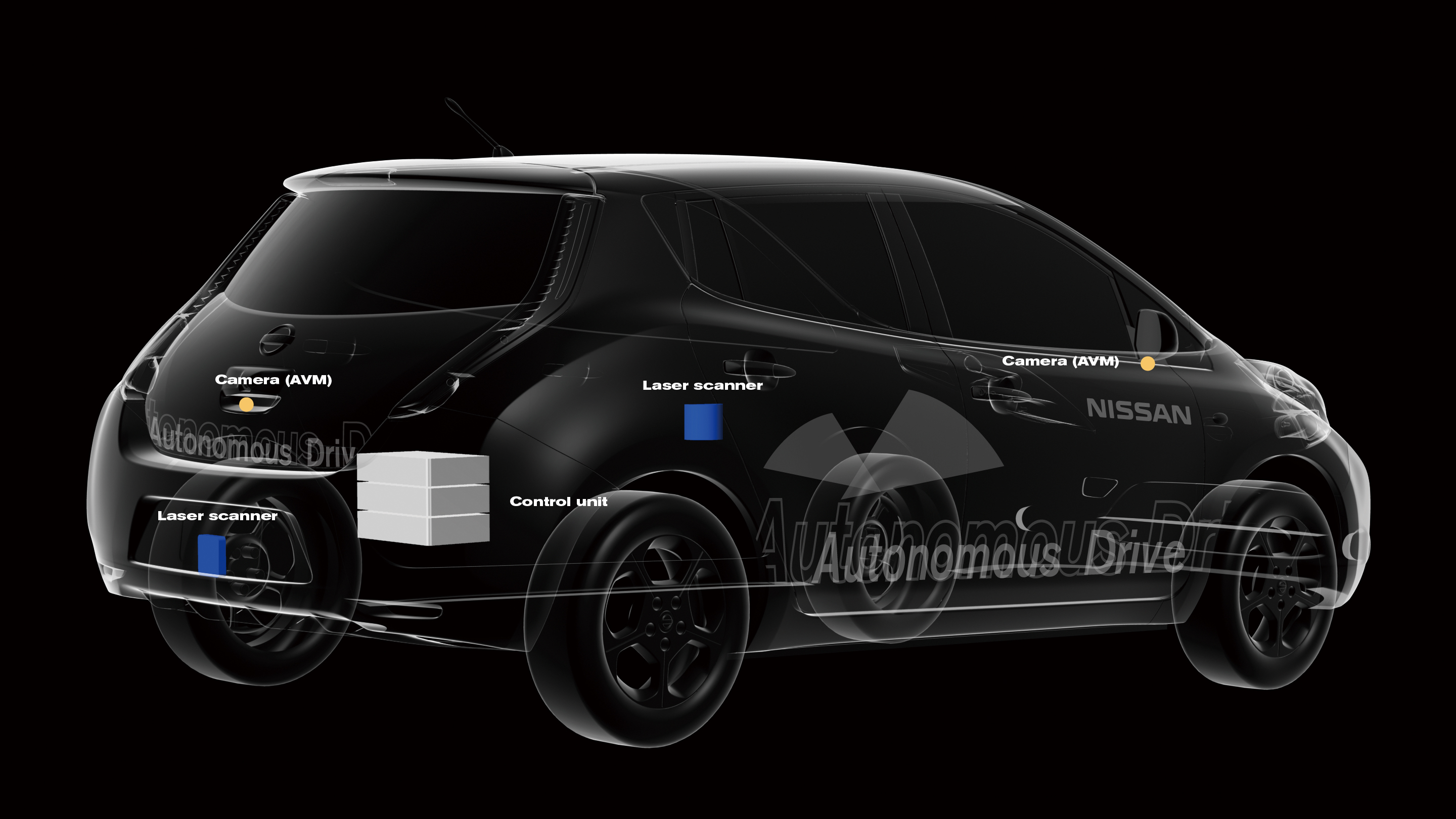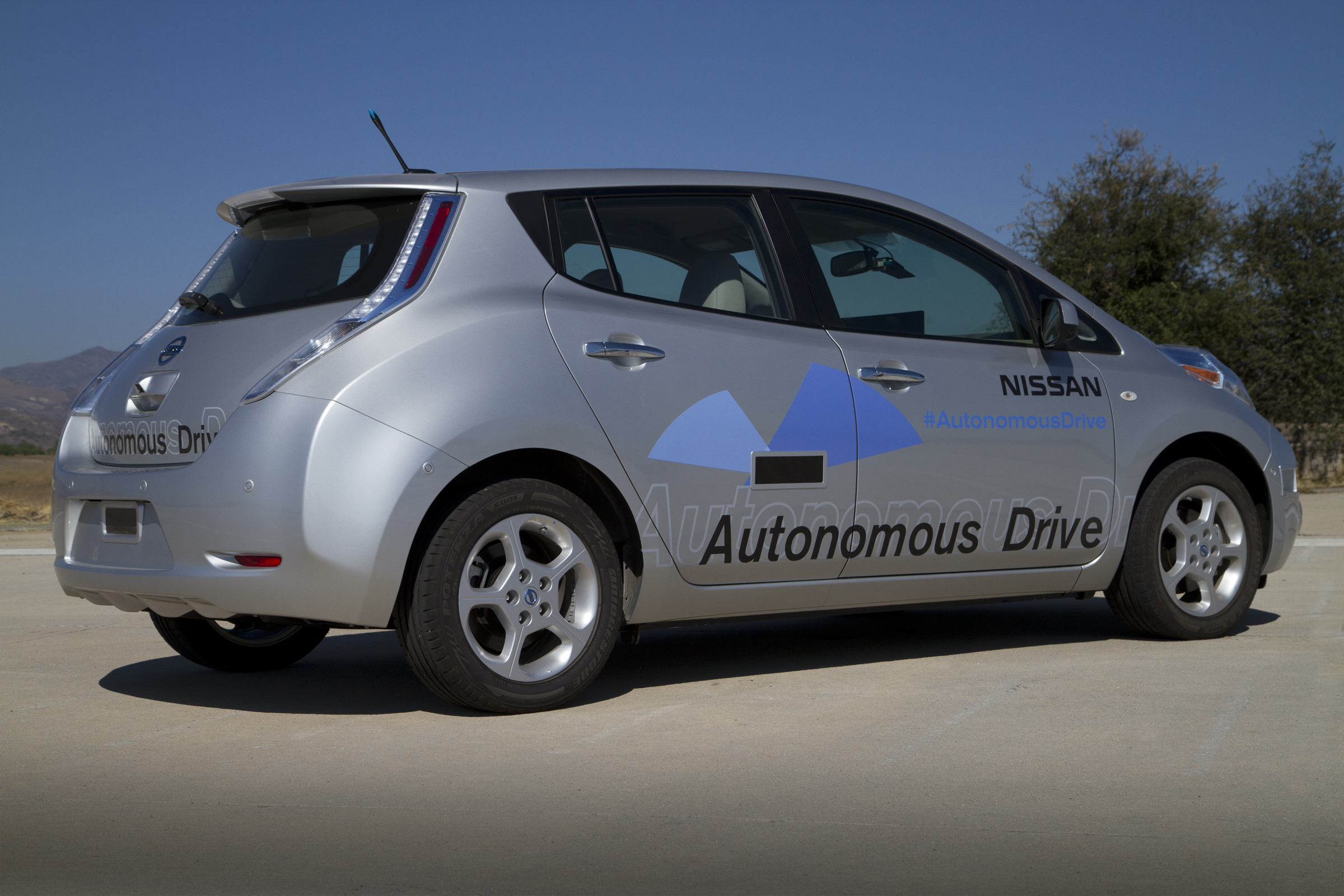NISSAN WINS TOP AWARD AT CEATEC JAPAN 2013 FOR AUTONOMOUS DRIVING TECHNOLOGY
- Wins Grand Prix, the top prize in the CEATEC Innovation Awards, as selected by U.S. journalists. First time win for Nissan
YOKOHAMA, Japan – Nissan Motor Co., Ltd.’s Autonomous Drive technology has won the Grand Prix in the CEATEC Innovation Awards, the top prize. It was awarded by a panel of independent US journalists working in the fields of IT and consumer electronics.
The award honors the best among the technologies, products and services exhibited at CEATEC JAPAN 2013. The jury of journalists assesses the exhibits at CEATEC in a number of categories to determine the best by focusing on their potential impact on the U.S. market, meeting new consumer needs, functionality, innovation and if the technology, product or service exhibited offers a unique solution to new needs. It is the first time for Nissan to have won the award and the first time for an automaker to be given this accolade.
Nissan’s Autonomous Drive technology also won the Smart Mobility, Special Award category.
The Grand Prix award was given with the following citation from the panel:
“Nissan’s Autonomous Drive technology will greatly benefit future society by reducing traffic accidents and fatalities, preventing traffic congestion and contributing to a reduction in environmental issues through improved fuel economy.
Nissan revealed the advanced development of its technology in August when the company committed to being ready with multiple, commercially-viable Autonomous Drive cars by 2020. The system will be deployed across the model range within two vehicle generations.
Nissan’s Autonomous Drive technology is an extension of its Safety Shield, which monitors a 360-degree view around a vehicle for risks, offers warnings to the driver and takes action if necessary. It is based on the philosophy that everything required should be on board the vehicle, rather than relying on detailed external data.
NISSAN CEO CARLOS GHOSN TESTS AUTONOMOUS DRIVE AT CEATEC
YOKOHAMA, Japan (Oct. 1, 2013) – Ahead of demonstrations to the public at CEATEC JAPAN 2013 CEO Carlos Ghosn has experienced the latest developments in Nissan’s breakthrough Autonomous Drive technology. Mr. Ghosn visited the exhibition – Japan’s largest for IT and electronics – at the Mahukari Messe convention center outside Tokyo to ride in a Nissan LEAF equipped with the system. CEATEC runs from October 1-5 and members of the public will be able to see Nissan’s Autonomous Drive vehicles in action for the first time.
The advanced state of Nissan’s Autonomous Drive was first announced at Nissan 360 in Irvine, California, in August. During the reveal Nissan committed to having multiple, commercially-viable Autonomous Drive vehicles ready by 2020, and to deploy the technology across the model range within two car generations.
After riding in the Nissan LEAF at CEATEC Mr. Ghosn said Nissan’s research and development had progressed rapidly since he tested an early prototype behind closed doors two years ago.
“The public sense that this is something of the future – something that they need and that they will use,” said Ghosn. “Now, the pressure is on us since we have launched this wave of attention about the technology.”
“It’s a fascinating experience and I think we have the talent and the engineering — and the passion also – to bring back the Nissan of technology through something meaningful. And this is meaningful.”
NISSAN TO SHOW AUTONOMOUS DRIVE VEHICLES AT CEATEC JAPAN 2013 EXHIBITION
- CEATEC 2013 will be the first public demonstration of Nissan’s revolutionary Autonomous Drive technology in Japan
- YOKOHAMA, Japan (September 26, 2013) – Nissan Motor Co., Ltd. will showcase its breakthrough Autonomous Drive technology at CEATEC JAPAN 2013. It will be the first time that Nissan’s new Autonomous Drive (AD) system will be demonstrated to the general public.
The annual CEATEC exhibition, Japan’s largest IT and electronics exhibition, will be held at the Makuhari Messe convention center outside Tokyo from October 1-5, 2013. The demonstration of Nissan’s AD system fits in with CEATEC JAPAN 2013’s main theme: “Smart Innovation—Technology for Future Society and Lifestyles.”
The Autonomous Drive system was revealed for the first time globally to journalists and investors at “Nissan 360,” the company’s brand and product event for global media and stakeholders held last month in Irvine, California.
“Nissan Motor Company’s willingness to question conventional thinking and to drive progress – is what sets us apart,” said CEO Carlos Ghosn in August. “In 2007 I pledged that – by 2010 – Nissan would mass market a zero-emission vehicle. Today, the Nissan LEAF is the best-selling electric vehicle in history. Now I am committing to be ready to introduce a new ground-breaking technology, Autonomous Drive, by 2020, and we are on track to realize it.”
Exhibits
The Nissan exhibit area at CEATEC JAPAN 2013 will feature a special driving course complete with virtual representation of roads typically found in Japan’s cities. Also, a live Autonomous Drive demonstration that focuses on artificial intelligence (AI) will be showcased.
With more than 90 percent of all traffic accidents caused by human error, Nissan’s Autonomous Drive has been developed to help realize an “accident-free society” by eliminating human error during driving. Autonomous Drive can be particularly effective on city streets, where the chances of being involved in an accident are 10 times higher than on highways. With Autonomous Drive, not only would the number of accidents decrease, it would also allow drivers who have trouble navigating through narrow lanes and intersections a safe and sure way to reach their destinations. The technology could also greatly benefit elderly people and those with disabilities who otherwise could not drive by themselves.
Live Demonstration of the Autonomous Drive Technology
At Nissan 360 in California the company’s engineers demonstrated two vehicles – one equipped with systems for highway driving, the other for city streets – as they work towards combining the technologies into a commercially-viable Autonomous Drive car by 2020.
A Nissan LEAF, equipped with Autonomous Drive technology developed for city streets, will be used in the live driving demonstration at CEATEC due to limited space in the exhibition hall. The car has five laser scanners and five cameras that monitor every angle surrounding it—a full 360 degrees. When approaching another vehicle, the artificial intelligence predicts the other vehicle’s movements and selects the most appropriate driving action in response. The AD driving demonstration will show how the artificial intelligence embedded in Autonomous Drive predicts another vehicle’s movement by having a driver operate another car alongside the Nissan LEAF that is equipped with Autonomous Drive simulate various potentially-risky situations, such as intersections without traffic lights or overtaking a parked car.
Lectures/Speaking Engagements
Nissan executives will participate in panel discussions at CEATEC JAPAN 2013, the ITS World Congress and Tokyo Motor Show as part of a series of three symposiums under the banner of “IT & Electronic Technology to Shape the Future of Driving Support Systems.”Time & Date: Wednesday, October 2, 2013 14:00-17:20
NISSAN ANNOUNCES UNPRECEDENTED AUTONOMOUS DRIVE BENCHMARKS
- Nissan will be ready with revolutionary commercially-viable Autonomous Drive in multiple vehicles by the year 2020
- Program underway in Japan to construct first dedicated, purpose-built autonomous drive proving ground
- The goal is availability across the model range within two vehicle generations
- Nissan already working with top universities including MIT, Stanford, Carnegie Mellon, Oxford and The University of Tokyo*; seeks to broaden collaborative research with other world-class institutions as well as start-ups
- Nissan leveraging 80 years of technical prowess and innovation in new effort to revolutionize vehicle chassis and design for Autonomous Drive
IRVINE, Calif. (August 27, 2013) – Nissan Motor Co., Ltd. today announced that the company will be ready with multiple, commercially-viable Autonomous Drive vehicles by 2020. Nissan announced that the company’s engineers have been carrying out intensive research on the technology for years, alongside teams from the world’s top universities, including MIT, Stanford, Oxford, Carnegie Mellon and the University of Tokyo.
Work is already underway in Japan to build a dedicated autonomous driving proving ground, to be completed by the end of fiscal year 2014. Featuring real townscapes – masonry not mock-ups – it will be used to push vehicle testing beyond the limits possible on public roads to ensure the technology is safe.
Nissan’s autonomous driving will be achieved at realistic prices for consumers. The goal is availability across the model range within two vehicle generations.
“Nissan Motor Company’s willingness to question conventional thinking and to drive progress – is what sets us apart,” said CEO Carlos Ghosn. “In 2007 I pledged that – by 2010 – Nissan would mass market a zero-emission vehicle. Today, the Nissan LEAF is the best-selling electric vehicle in history. Now I am committing to be ready to introduce a new ground-breaking technology, Autonomous Drive, by 2020, and we are on track to realize it.”
Nissan is demonstrating the breadth of the capability of its autonomous drive technology for the first time at Nissan 360, a huge test drive and stakeholder interaction event being held in Southern California. Laser scanners, Around View Monitor cameras, as well as advanced artificial intelligence and actuators, have been installed in Nissan LEAFs to enable them to negotiate complex real-world driving scenarios.
Nissan’s autonomous driving technology is an extension of its Safety Shield, which monitors a 360-degree view around a vehicle for risks, offers warnings to the driver and takes action if necessary. It is based on the philosophy that everything required should be on board the vehicle, rather than relying on detailed external data. The technology being demonstrated at Nissan 360 means the car could drive autonomously on a highway – sticking to or changing lanes and avoiding collisions – without a map. It can also be integrated with a standard in-car navigation system so the vehicle knows which turns to take to reach its destination.
A revolutionary concept like autonomous drive will have implications throughout the design and construction of cars. For example, collision-avoidance by machines with the capability to react more rapidly and with more complex movements than a human driver will place new demands on the chassis and traction control. Nissan is leveraging 80 years of research and development expertise to create a complete solution for autonomous drive.
A vehicle that looks out for you
Six million crashes in the US per year cost $160 billion and rank as the top reason of death for four- to 34-year olds. And, 93% of accidents in the US are due to human error, typically due to inattention.
With Autonomous Drive Nissan has the technology today to detect and respond to the situations causing this tragedy.
In the future, Autonomous Drive also means less input from the driver; U.S. drivers average 48 minutes per day on the road — hundreds of hours a year that could be used more productively.
For the aged or those with disabilities, Autonomous Drive offers another benefit: true independence and mobility for all.
*Full list of institutions currently involved: AIST(National Institute of Advanced Industrial Science and Technology, Carnegie Mellon University, Chuo University, Hiroshima University, The University of Iowa, University of Oxford, Stanford University, Massachusetts Institute of Technology, NAIST (Nara Institute of Science and Technology), Virginia Tech Transportation Institute, Russian State Scientific Center for Robotics and Technical Cybernetics, Kyushu University, Keio University, Nagoya University, Shinshu University, Tohoku University, Tokyo Polytechnic University, Tokyo University of Agriculture and Technology, UC Berkeley, The University of Tokyo, University of Tsukuba, Waseda University, University of Yamanashi
Autonomous Mode activated
August 27 – Irvine, Calif. – Nissan announced Tuesday plans to have commercially-viable Autonomous Drive vehicles on global roads by 2020.
AD vehicles allow autonomous travel on streets or highways, make lane changes and avoid collisions utilizing a number of current and next-generation technologies.
Executive Vice President Andy Palmer, at the Nissan 360 event in Irvine, California, said the automaker is again committed to bring such cutting-edge technologies to a larger market, as with the Nissan LEAF.
“We’ve announced that we’ll introduce an Autonomous Drive vehicle by 2020, and we said within two vehicle life cycles we’ll make that technology available across the entire entire portfolio, so what we’ve done is we built and fleshed out the two key pillars of Nissan Motor Co. – zero emissions and zero fatalities. Obviously, Autonomous Drive is really about a goal of zero fatalities,” Palmer said.
Nissan is already working on a proving ground in Japan for the technology, which uses laser scanners, Around View Monitor cameras, as well as advanced vehicle intelligence and actuators to potentially ease traffic and allow multi-tasking while commuting.
Some 6 million accidents occur in the U.S. alone each year, with some 93% attributed to human error.
In addition to safety, for the aged or those with disabilities, Autonomous Drive offers another benefit: true independence and mobility for all.
Nissan is working with institutions such as MIT, Stanford, and the University of Tokyo on next-generation development.
Executive Vice President for R&D Mitsuhiko Yamashita says the Autonomous Drive vehicle will only become more intelligent.
“I think the vehicle has a very high potential. What (it) can do from now is accumulate more knowledge and negotiations with all traffic conditions, and the vehicle will become smarter and smarter, as the vehicle accumulates that knowledge and data base. So, this vehicle has big potential,” said Yamashita.
Autonomous Drive vehicles will include models beyond the Nissan LEAF, and like the EV may see an era of “What If” become “What Is” in the near future.




